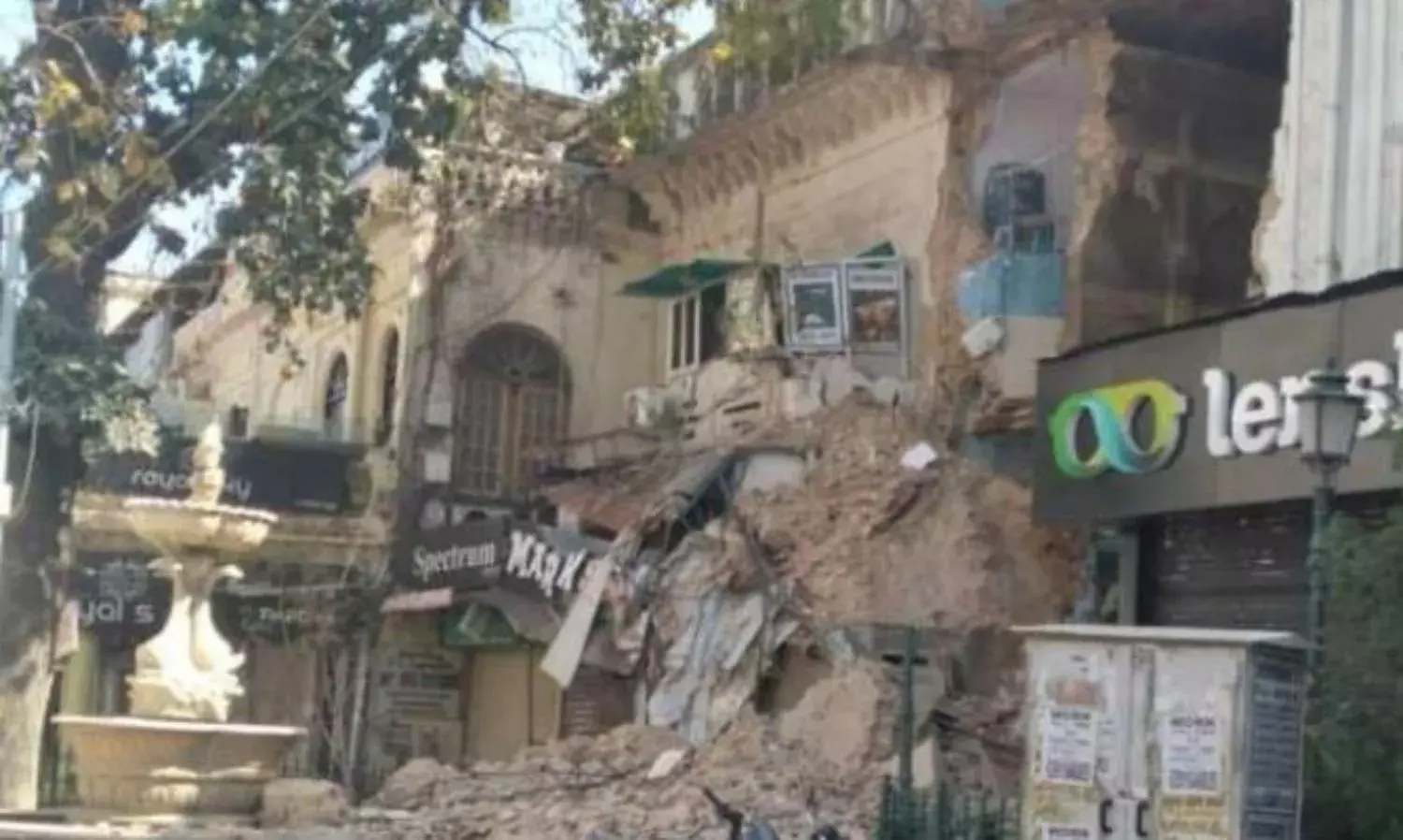Lucknow Neglects its Heritage - 173 Year Old Gate To Imambada Collapses Silently
World Heritage Day
On World Heritage Day today, Lucknow continues to mourn the loss of yet another monument from 1847. The scalloped outer gate to the city’s Sibtainabad Imambara is no more. The 173 year old gate crumbled in early April without hurting a soul as the street was empty of people observing the lockdown in times of the Corona virus.
Lucknow is strewn with architectural jewels from the late 18th century when ruler after ruler was on a building binge throughout the 19th century, making visitors sigh that no other city in the world was as beautiful as Lucknow.
The British took over from the king in 1857 and left the city with some more architectural marvels like the provincial parliament, numerous churches and other hotel and club buildings that are badly in need of care. According to the Archeology Survey of India (ASI) there are nearly 366 monuments of national importance in Lucknow. The ASI acknowledges that it is its job to make sure that ancient monuments and archeological sites are properly maintained.
However most historic buildings in Lucknow are in a state of neglect today. The very decorative Sibtainabad Imambada was completed in 1847 by Wajid Ali Shah, last ruler of Lucknow as a majestic mausoleum for his father Amjad Ali Shah who is buried there. A decade later, the outer gates and the Imambada were badly damaged during the first war of independence with the British in 1857. After the defeat of the freedom fighters by the British, the Imambada was used as a Church and accommodation within the Imambada complex meant for pilgrims was rented out as residences to Anglo-Indian families. In one such home had lived the grandparents of Cliff Richard, British singer and musician and who first learnt to strum the guitar in Lucknow.
The porch of a building from colonial times that is home today to the divisional railway manager was pulled down in 2018 to make way for the metro in the heart of the historic Hazratganj shopping street.
Dozens of other buildings both private and public have been razed to accommodate modern constructions that hurt the eyes.
The Begum Kothi was replaced with the aesthetically unappealing Janpath Market and the historic Pioneer newspaper building designed by Walter Burley Griffin, the 19th century architect of Canberra, Australian capital was sold and torn down a few decades ago. In its place stands a massive multi storeyed complex of office buildings.
Griffin died in Lucknow in 1937 and is celebrated around the world. But in Lucknow fans often wade through a thick jungle of grass to reach the architect’s grave to pay their respect. The beautiful Burlington Hotel, the regal Royal Hotel are no more and the Hotel Carlton sold off half its garden to make way for a crowded shopping mall.
The iconic Mayfair complex of cinema hall and restaurant did not survive the ravages of time, and resembles a black hole now. The historic Rifa-e-Aam Club building from 1860 where the Progressive Writer’s Association first met with the great writer Munshi Premchand in the chair is a dumping ground for garbage collected around the city.
Many other buildings lining the kilo meter long Hazratganj market redesigned by the British in imitation of Queensway, the fashionable shopping street in London are shabby as well.
The Sibtainabad Imambada complex is situated at one end of Hazratganj. The premises have been abused in the past by citizens and squatters alike. Once India gained freedom from the British in 1947, the Imambada was used by a carpenter as a shop. For decades the premises suffered the weight of heavy encroachment, till the main building of the Imambada was rescued by lawyer and now chief care taker Mohammad Haider. Haider got rid of the squatters and with the help of the ASI the main building of the Imambada was renovated.
Today Haider quotes Arthur Guiterman, the well known American author who says:
This is our heritage, this that our fathers bequeathed us,
Ours in our time, but in trust for the ages to be:
Wasting or husbanding, building destroying or shielding,
Faithful or faithless-possessors and stewards are we.
In 2008 Haider became mutawalli or caretaker of the dilapidated Sibtainabad Imambada. That responsibility aroused in the young lawyer a deep sense of protectiveness towards the monument that had surely seen better times. A deep love for heritage and history surfaced in Haider and he flagged off a series of correspondence with the government and ASI officials. That tiresome activity paid off and the ASI helped in the restoration of the Imambada that stands tall today although it lost its outer gate recently.
The contribution of Ansaruddin, a local master artisan and numerous labourers who worked tirelessly for almost half a decade have succeeded in rediscovering the beautiful art work on the walls of the Imambada. Interesting murals hidden behind thick walls of careless whitewash have emerged for the world to see the wonder that the Imambada once was. While the main building of the Imambada has been cleaned up, the premises around it continue to be threatened by squatters.
Will concerned authorities do anything about it is to be seen. In the meanwhile Citizens for Lucknow, a group of heritage lovers along with historians and concerned citizens continue to highlight the shared responsibility of everyone in preserving the collective culture of this city that seems to be on the path of ruin.





